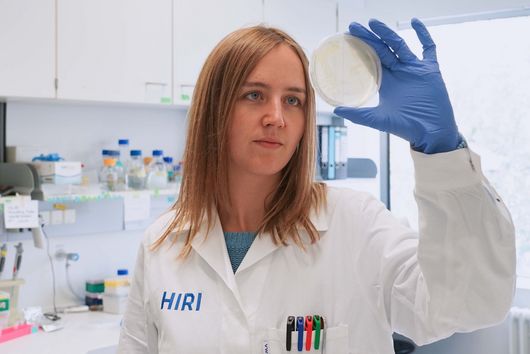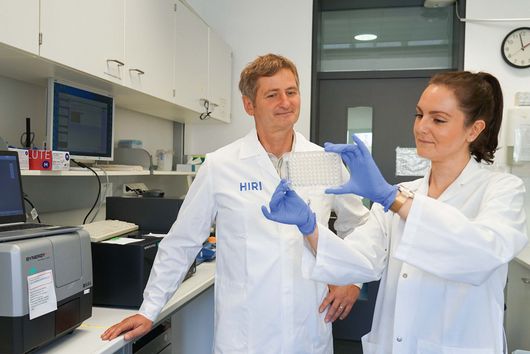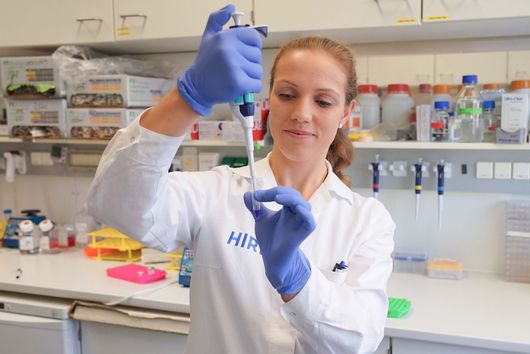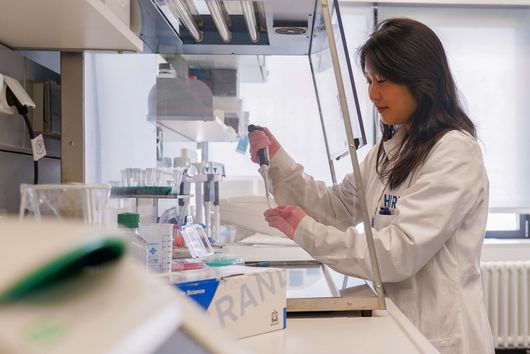
A very special molecule: RNA
Ribonucleic acid is a jack-of-all-trades. It's time to finally give it the floor...
Hello! Allow me to introduce myself: my name is ribonucleic acid. But feel free to call me RNA, everyone does. I am a thread-like molecule that consists of the nucleic bases adenine, guanine, cytosine, and uracil and a sugar-phosphate backbone. I exist in hundreds of thousands of copies in the cells that make up your body. And, not to boast, but nothing works without me. I help to translate your genetic information into proteins and thus into new cells. I act as a blueprint for your body's proteins. When I serve within your cells in this function, I am also known as messenger RNA. Or mRNA for short. I can have other roles as well and then I have different names—but that would go too far at this point.
“Nothing works without me.”
So let's talk a little longer of me as mRNA since that's how almost everyone knows me by now. I have been offering my services in vaccines for more than a year. In this role, I protect you from suffering severe disease progression if you get infected with the SARS-CoV-2 coronavirus. Within the vaccine, I act as a blueprint for a particular coronavirus molecule. A really ingenious move: After I am injected into your arm muscle, your cells take over. They produce the spike protein of SARS-CoV-2 according to the supplied blueprint, and your immune system recognizes this molecule as an invader. As a result, your body's own immune defense system starts to fight back.
The best player on the field
As an mRNA vaccine, I make sure that your immune system is well trained. In this way, it can immediately attack like the best player on the field as soon as you come into contact with the virus. Once I have delivered my message, I am no longer needed. I am unstable by nature and disintegrate rapidly. As a vaccine, I won’t remain, either. As soon as my blueprint has been read, I disappear. Your body simply degrades me.
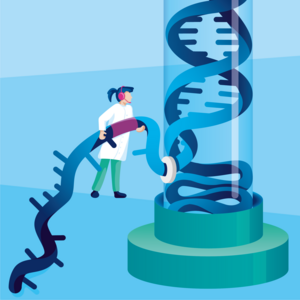
© HIRI, Sandy Westermann (SCIGRAPHIX)

© HIRI, Sandy Westermann (SCIGRAPHIX)
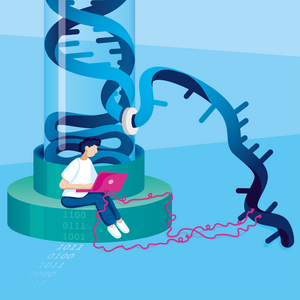
© HIRI, Sandy Westermann (SCIGRAPHIX)
Tumor cells reveal themselves through their surface protein
Doing research on fragile molecules like me is not easy. But it's worth it, as evidenced by the new COVID-19 vaccines. Decades of basic research have made it possible for the vaccine to be launched so quickly. However, it's not just about infections and how people can protect themselves against pandemics. In countless studies, scientists are also investigating how I can be of help in the treatment of genetic diseases or cancer, for example. The proteins on the surface of tumor cells, for instance, are different from those on healthy cells. And to ensure that your immune system detects and fights the malign cells, I might be able to train it in the future by means of a vaccination.
Antibiotic resistance: The next global threat
In bacteria, I play an important role in the quest to counteract increasing antibiotic resistance. Researchers focus on me in this context since I might serve as a marker for why bacteria survive even when they are treated with drugs. Approximately one million people per year worldwide die as a result of infections caused by multidrug-resistant pathogens. According to estimates, this figure could rise to ten million deaths by 2050—unless new therapeutic approaches can be developed.
Since I am extremely adaptable, many clinical applications are conceivable in the future. With me, even personalized medicine, which adapts therapeutics to your individual needs, can be achieved. And as I have such a promising future, there is an institution in Würzburg dedicated just to me: the Helmholtz Institute for RNA-based Infection Research (HIRI). In May 2022, the HIRI has celebrated its fifth birthday. Chapeau—and happy birthday!



